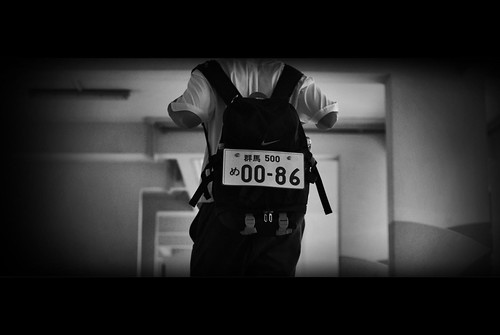Thursday, August 20, 2009
12:30 AM
Right.
A photograph’s studium and punctum.
Not in the dictionary, and hardly anywhere on the net.
Still though, I concluded from the few bits of info I found that this studium and punctum thing is a philosophy/analogy. It is created by a man by the name of Roland Barthes in his book Camera Lucida.
There was a handful of text of which I could not fully comprehend what they meant such as:
Barthes names the trace a photo’s punctum and distinguishes it from the photo’s studium. The category stadium defines photographs through a presence/ representation binary. The studium entails any photographic content thinkable in representational terms. Reducing a photo to its stadium reads the photo as a sign that represents a presence.
and,
Barthes “impossible science of the unique being” reads a photo as irreplaceable in that its utterly singular punctum evades representation’s homogenizing logic. To read a photo’s punctum may be impossible, but deconstruction traverses impossibility.
and,
A singularity’s trace, the punctum is nowhere photographable in a photo’s studium, yet the punctum supplements and mobilizes every element of the studium. The boarder between punctum remains heterogeneous to and breaches the studium’s representational closure.
Following that, there were some definitions by other people on the net, which helped me in understanding what’s a photograph’s studium and punctum. What are known as the punctum in a photograph are accidental details that provide no explanation but instead questions the surrounding in those photographs.
The “punctum” (or the “accident”, although not necessarily a bad thing) always works in relation to the “studium” (the commitment or the general intent) of the photograph, and is not always the “shock effect”. It is the aspect of the image that will keep drawing the viewer’s eye—or interest—back into the image, whilst never originally being part of the original intent of the image. Most of the time, the “punctum” is subtle and discreet, but always subjective as defined by how the viewer reads the image.
Here’s an example. This guy shared that a local photography group discussed a photo of Tony Blair, probably quite well known. The ‘punctum’ was supposedly in the detail of one of his hands. It’s stained with ink, an overlooked detail in relation to an otherwise perfect portrait. It ‘punctures’ the manipulated and ideological message although this political discourse is tiresome and predictable: New Labour spin, Tony Blair.

And so, the questions.
What is the studium and the punctum of this photograph?
I would think that the punctum has to be the loose edge at the top right side of the print pasted on the wall. Because it doesn’t seem like it’s meant to be, thus is the accident.
If the studium refers to the intention of this photograph, then it would have to be to show the artwork pasted on the wall. However the person who took the shot had unintentionally captured the punctum.

